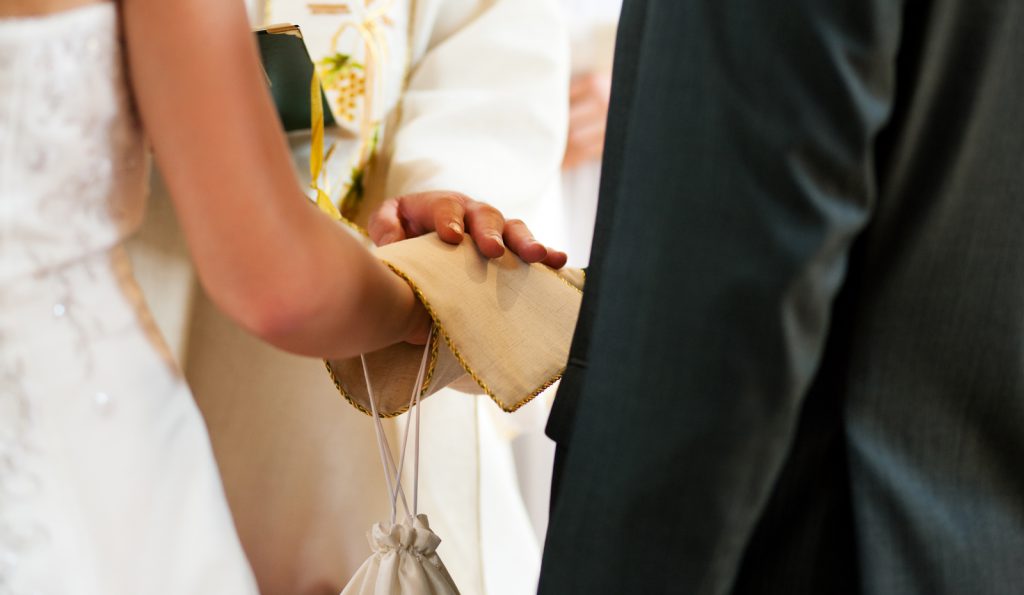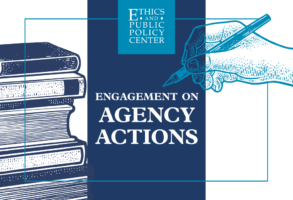
Published September 3, 2014
The Catholic Difference
My son Stephen and I spent an unusual, albeit unusually moving, Independence Day: We attended the golden wedding anniversary celebration of my friends Piotr and Teresa Malecki, which began with a Mass of thanksgiving in the Blessed Sacrament Chapel of Cracow’s Wawel Cathedral—the place where Piotr and Teresa had exchanged vows on July 4, 1964, kneeling before their old kayaking and hiking friend, the archbishop of Cracow (who, as Pope St. John Paul II, was canonized some two months before the Maleckis’ jubilee.)
Piotr Malecki, Karol Wojtyla’s altar boy at St. Florian’s parish and the self-described “enfant terrible” of that network of Wojtyla’s friends known as Srodowisko, is a distinguished physicist. Teresa Malecka, who had to convince Wojtyla (whom she and others called Wujek, “Uncle”), that she was ready for marriage at age twenty, is an accomplished musicologist and the former vice-dean of the Cracow Academy of Music. Outside the cathedral, the jubilarians were greeted by other Srodowiskoveterans: Danuta Ciesielska, widow of Wojtyla’s closest lay friend and kayaking instructor, the Servant of God Jerzy Ciesielski, whose beatification cause is underway; Danuta Rybicka, who, as a plucky undergraduate in Stalinist Poland challenged the communists who were trying to expel the nuns from the convent-dormitory where she and others boarded. All of them shared a remarkable experience in their youth: As they were being formed into mature Christian adults by Wojtyla, they helped form an intellectually, athletically, and mystically gifted young clergyman into one of the most dynamic priests of his generation, a pioneer in the pastoral strategy he called “accompaniment.”
As I said to Stephen afterwards, as we watched Wojtyla’s kids, no longer kids, shake hands, embrace, and offer flowers to Piotr and Teresa, “This is the beginning of World Youth Day, right here.” I could just as easily have added Love and Responsibility; the Theology of the Body; the 1981 apostolic exhortation, Familiaris Consortio; the 1988 apostolic letter on women, Mulieris Dignitatem; and the 1995 Letter to Families. For as I noted in a toast at the anniversary dinner the Maleckis’ sons had arranged, the network of now-not-so-young friends that had gathered around Karol Wojtyla—men and women who resolutely refuse to think of themselves as something special—had in fact helped bend the history of the Church, and the world, in a more humane direction.
One other facet of this happy celebration struck me with particular force. As on their wedding day when Piotr and Teresa first exchanged vows, now, on their golden jubilee, the priest celebrating the thanksgiving Mass wound the end of a stole around their joined hands, its other end remaining around his neck, as the couple renewed their pledge of love and fidelity. It’s a marvelous Polish custom, perhaps familiar in other cultures. And it says something very important about marriage, which is under assault throughout the world by the forces of moral confusion, misconstrued “tolerance,” and societal deconstruction.
What that gesture says is that, in the biblical and Christian view, the couple “getting married” are engaging in a priestly act, an act of right worship: They are sealing, not a mere contract, but a covenant in which two become one. And from that unity, from that new family, springs the gift of new life. The Church’s official witness to this covenant-making, the ordained priest, exercises his unique form of priesthood by offering the Church’s recognition of, and blessing on, what the couple, in their exercise of the priesthood of the baptized, have covenanted together. That stole, touching both priest and couple, embodies the classic Catholic teaching that the couple who bind themselves for life are the ministers of the Sacrament of Matrimony.
When marriage is reduced to a contract for mutual economic advantage among any configuration of consenting adults, something essential in what Christians understand to be “marriage” is lost: something “deep-down-diving,” to borrow from the playwright Ibsen. And that, I suspect, is why state marriage licenses that no longer specify “Bride” and “Groom” but rather “Spouse 1” and “Spouse 2” seem somehow bizarre. And sad.
And dangerous.
George Weigel is Distinguished Senior Fellow of Washington’s Ethics and Public Policy Center. His previous articles can be found here.







